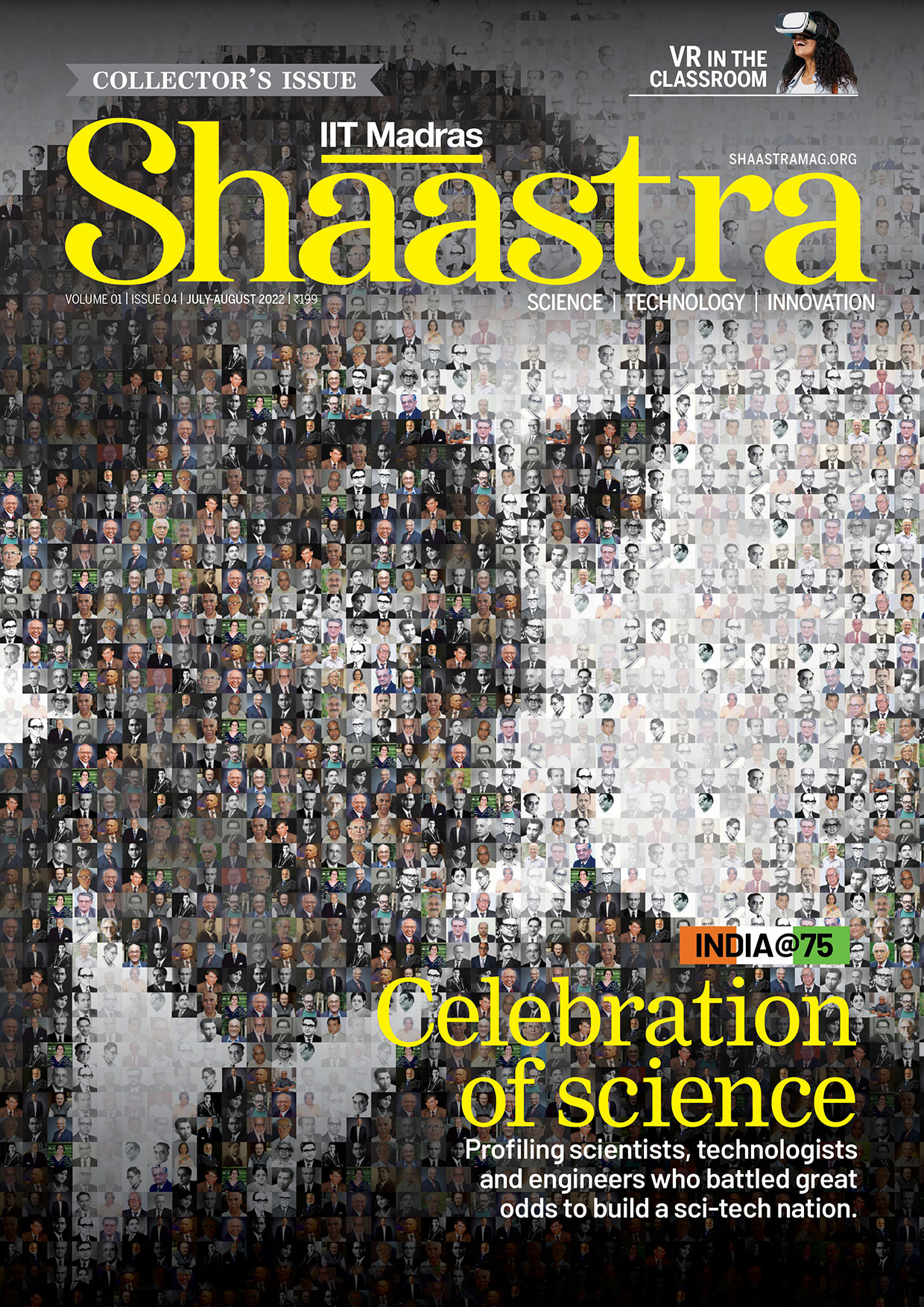Solving astro mysteries
-
- from Shaastra :: vol 04 issue 01 :: Feb 2025

Researchers study the origin of black hole jets using radio telescopes.
Anne-Kathrin Baczko was a first-year PhD student when the Event Horizon Telescope (EHT), an international network of radio telescopes, captured the first image of a black hole at the centre of galaxy M87 in 2019. Baczko still cherishes those exciting days leading up to the public release of the image. Since then, researchers have gained closer views of black holes, but the images remain far from ideal.
Baczko, now Post-doctoral Fellow at Chalmers University of Technology in Sweden, leads a team aiming to unravel one of astrophysics' great mysteries: black hole jets. The team is focusing at the heart of NGC 1052, a galaxy located around 60 million light-years away (bit.ly/Blackhole-Jets). "We concentrated on the innermost region of NGC 1052," says Baczko. It is one of the rare objects where the twin jets are observed emanating nearly in the plane of the sky, she adds.
Baczko and her team proposed that the twin jets are powered by a supermassive black hole. While alternative causes could explain the jets, their findings revealed a magnetic field that can only be produced by a black hole. The origin and the processes of these astrophysical jets are some of the most powerful processes of the universe and yet inexplicable. The team aimed to have a closer look into the origin of such jets coming out of NGC 1052.
The researchers studied data from different frequencies to understand the magnetic field and what drives the jets. They focused on the area believed to hold the black hole and the jet formation zone, as it offers important clues about the galaxy's activity. Their observations detected signals pointing to synchrotron radiation, where charged particles spiral around magnetic field lines at high speeds. This helped them estimate the magnetic field's strength, confirming theories and supporting the idea that a black hole powers NGC 1052's jets. "Jets play a crucial role in galaxy evolution, energy transport and studying the universe's early stages," notes Baczko. Her study not only highlights the EHT's versatility but also its potential to explore a wide range of scientific questions beyond black hole imaging.
Koushik Chatterjee, Post-doctoral Research Associate at the University of Maryland and study co-author, notes that observing regions near black holes is challenging due to optically thick surroundings that obscure the view. However, extended jets emitted by black holes can often be studied instead. Using very long baseline interferometry, researchers were able to focus on the different areas of the jets like near the centre and away.
PAST ISSUES - Free to Read


Have a
story idea?
Tell us.
Do you have a recent research paper or an idea for a science/technology-themed article that you'd like to tell us about?
GET IN TOUCH














